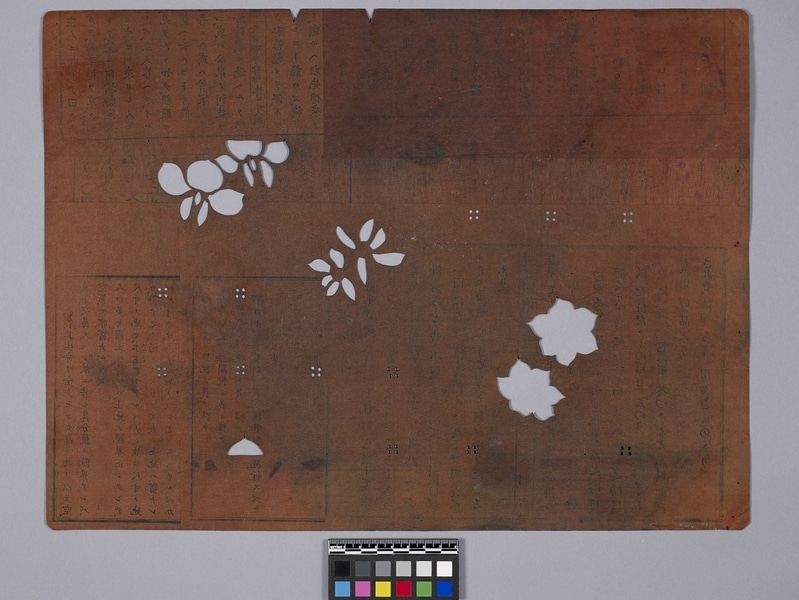Stencil Item Number: Ed5.3117 from the MOA: University of British Columbia


Description
The brown rectangular stencil has a cut design of three pairs of flowers. In the upper left corner is a tip of flower petal. Overall are twelve sets of four round holes arranged in a square pattern. Two register marks are located on the long sides of the design. Two triangular notches are located on the left lower edge. On the front are grid lines in black ink and on the back are traces of Japanese script. There are dye stains on both sides.
History Of Use
The katazome method of dying fabric used a resist paste applied through a stencil; when the paste dried the stencil was removed and colour was applied by brush. The paste was then washed away leaving undyed areas to form pattern against coloured ground. Prior to the 16th century cut stencils were used to colour leather armour. However, during the Edo Period (1603-1868) the technique was developed as a true native craft.
Cultural Context
fabric printing
Item History
- Made in Mie, Japan before 1955
- Collected before 1955
- Owned by Special Collections U.B.C. Library before July 5, 1985
- Received from Special Collections U.B.C. Library (Transferring institution) on July 5, 1985
What
- Name
- Stencil
- Identification Number
- Ed5.3117
- Type of Item
- stencil
- Overall
- height 32.6 cm, width 44.0 cm
Who
- Culture
- Japanese
- Previous Owner
- Special Collections U.B.C. Library
- Received from
- Special Collections U.B.C. Library (Transferring institution)
Where
- Holding Institution
- MOA: University of British Columbia
- Made in
- Mie, Japan
When
- Creation Date
- before 1955
- Collection Date
- before 1955
- Ownership Date
- before July 5, 1985
- Acquisition Date
- on July 5, 1985
Other
- Item Classes
- textiles
- Condition
- good
- Accession Number
- 1037/0156